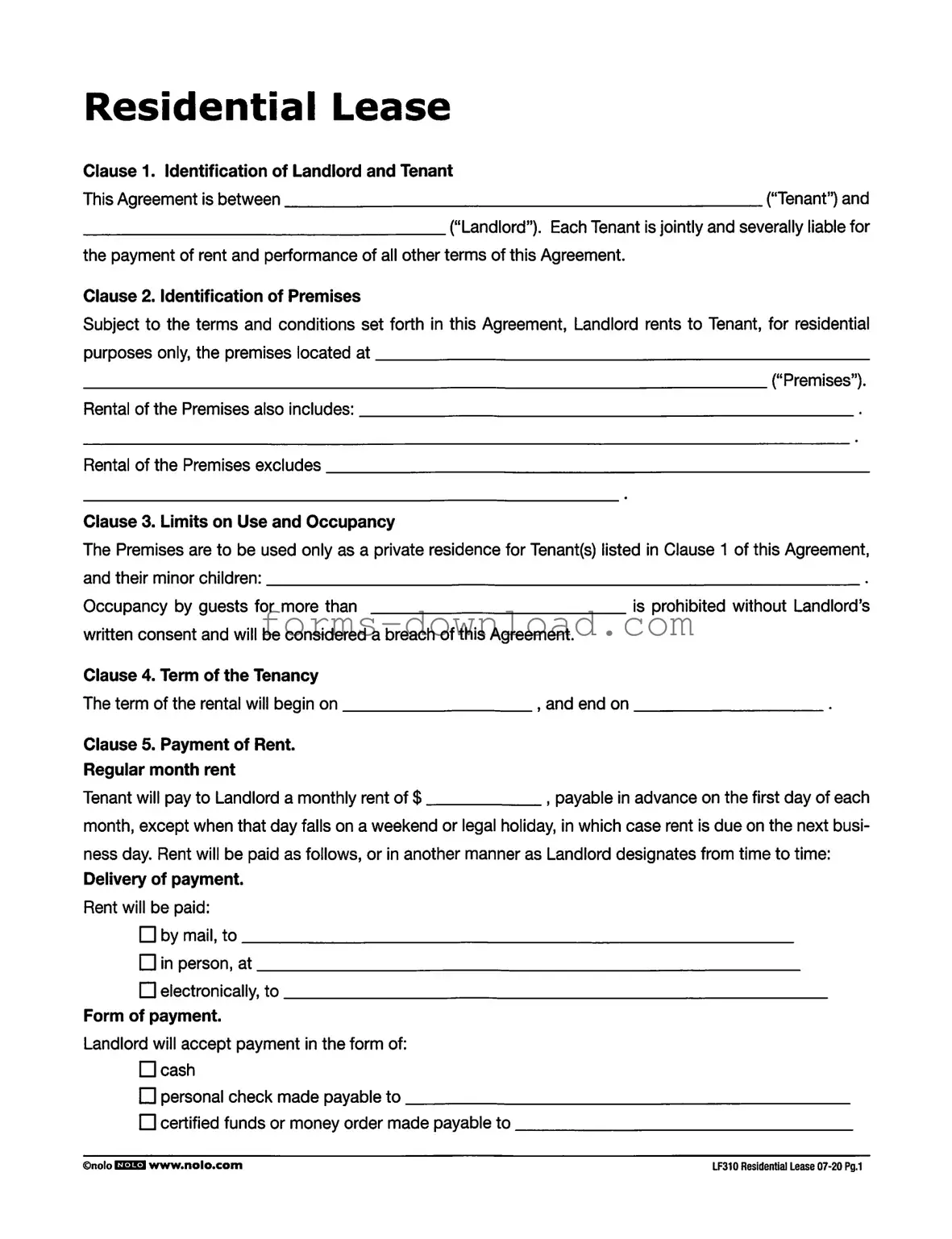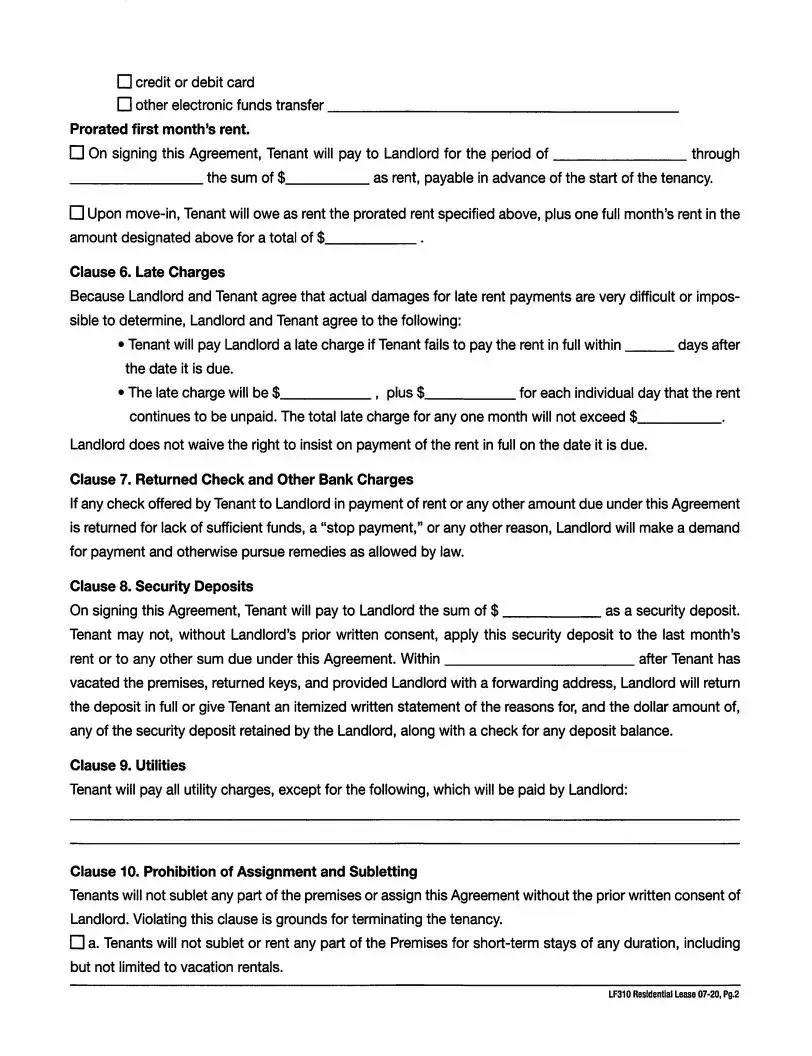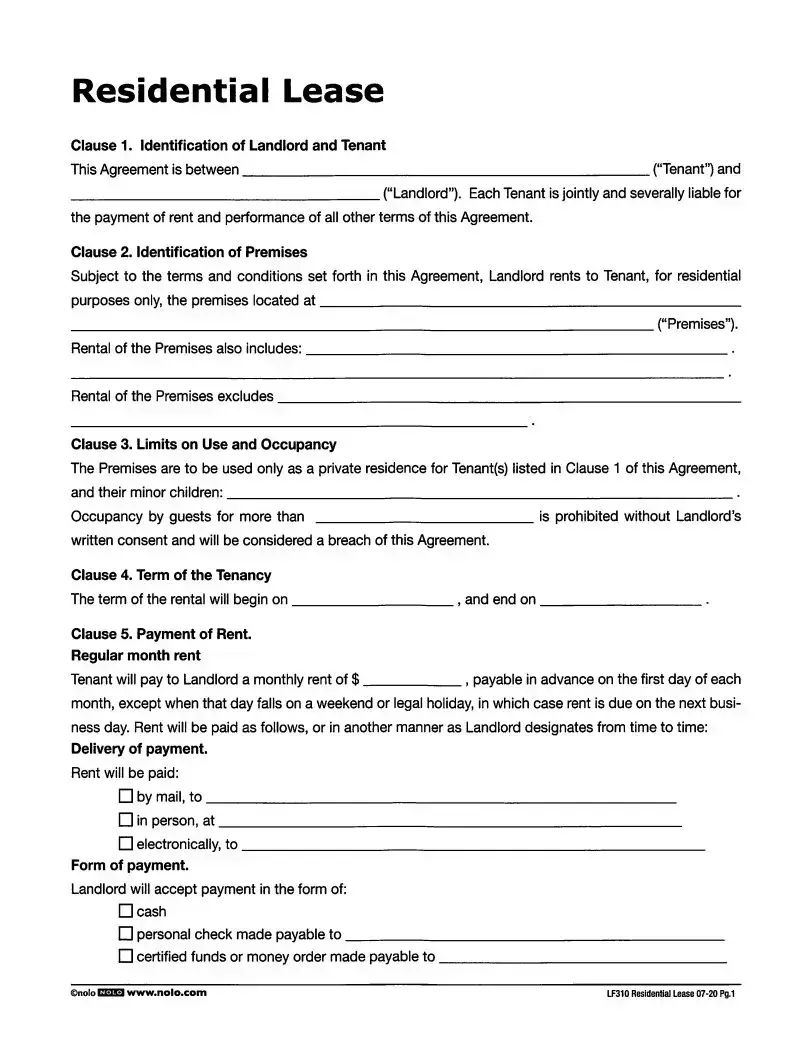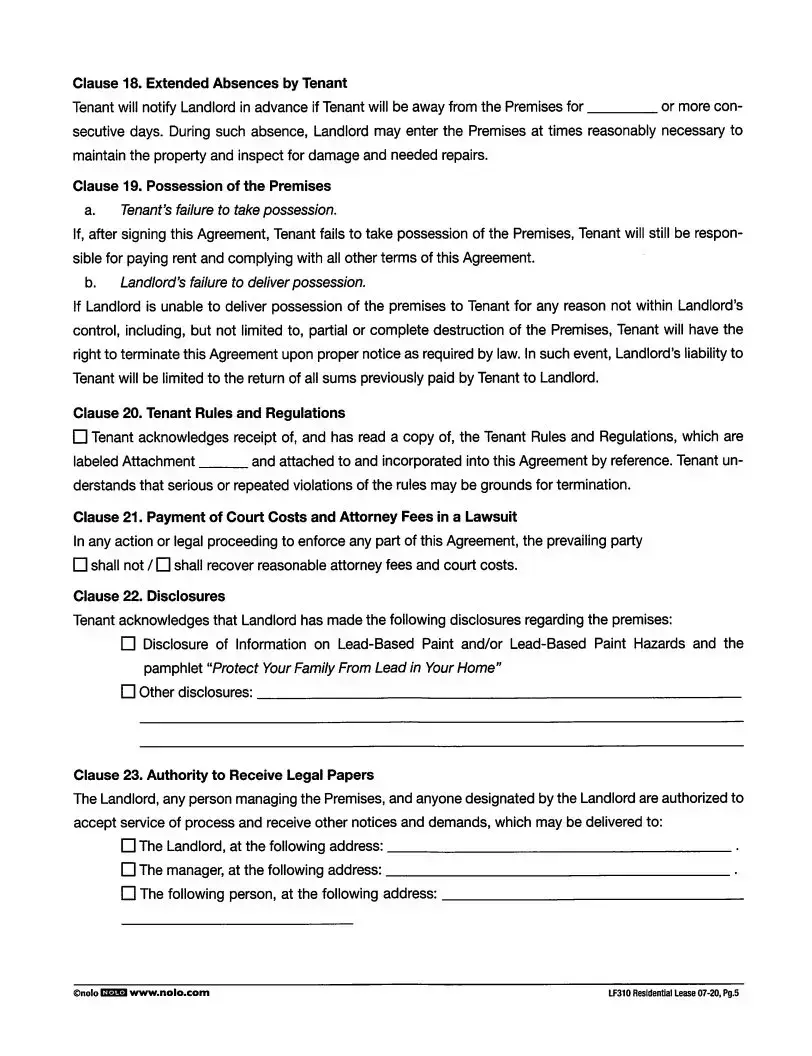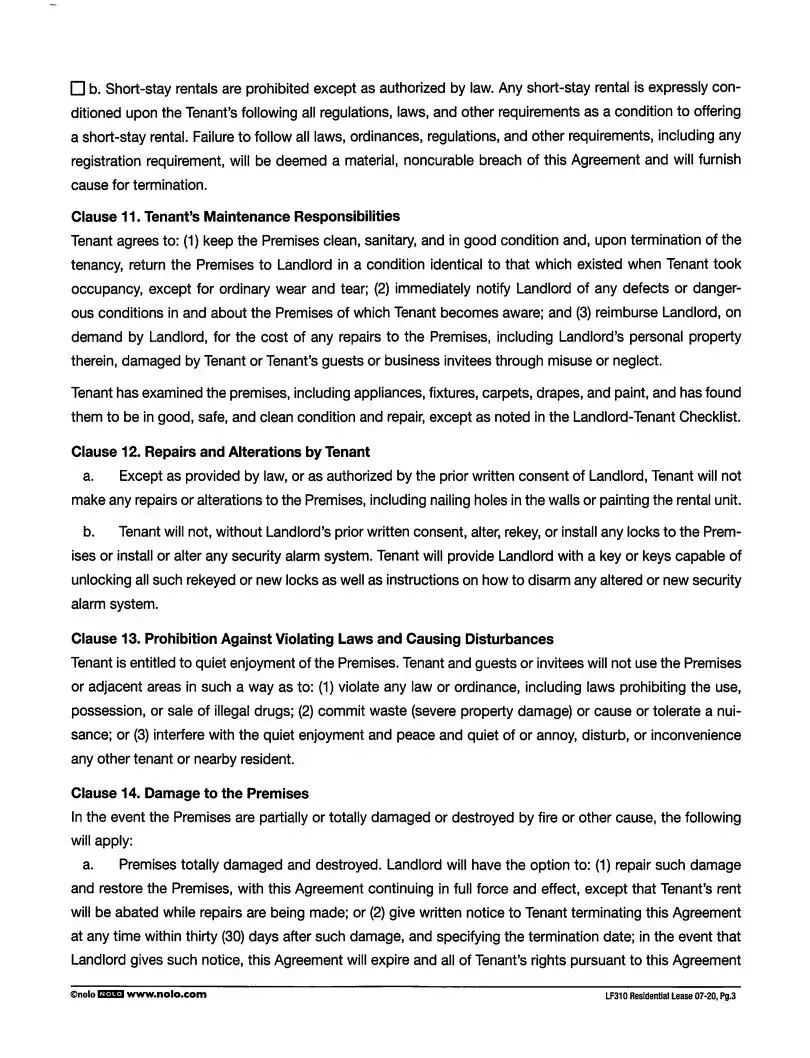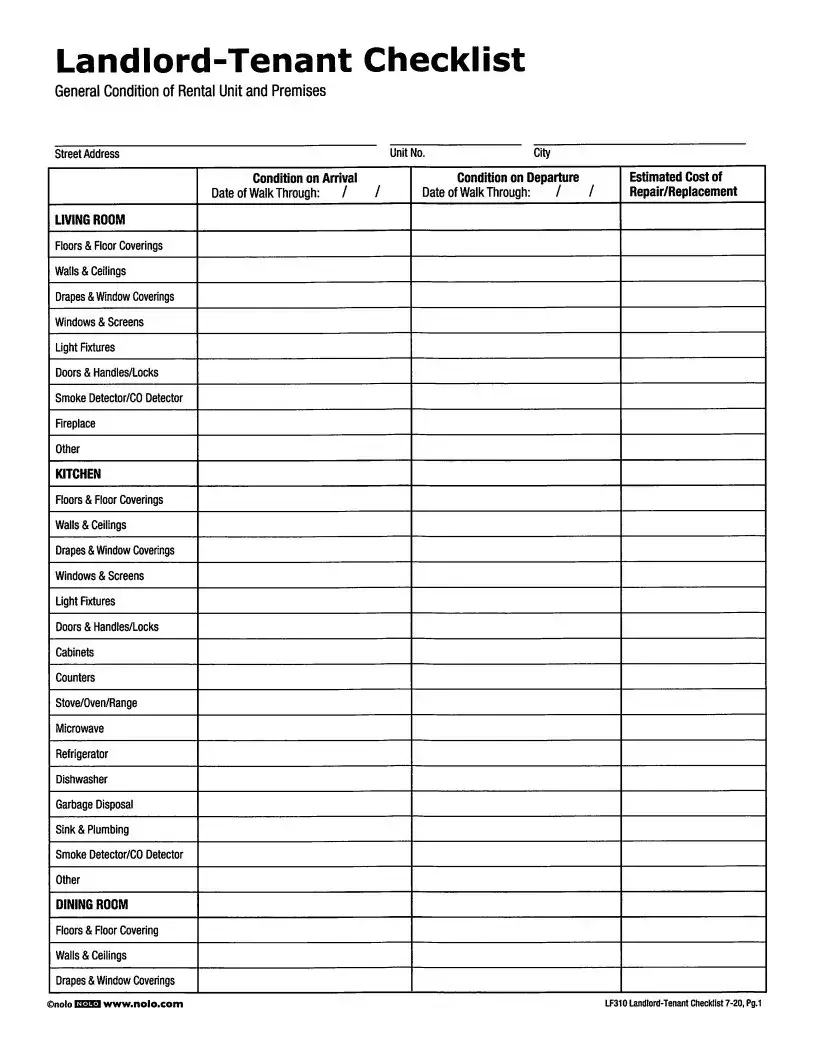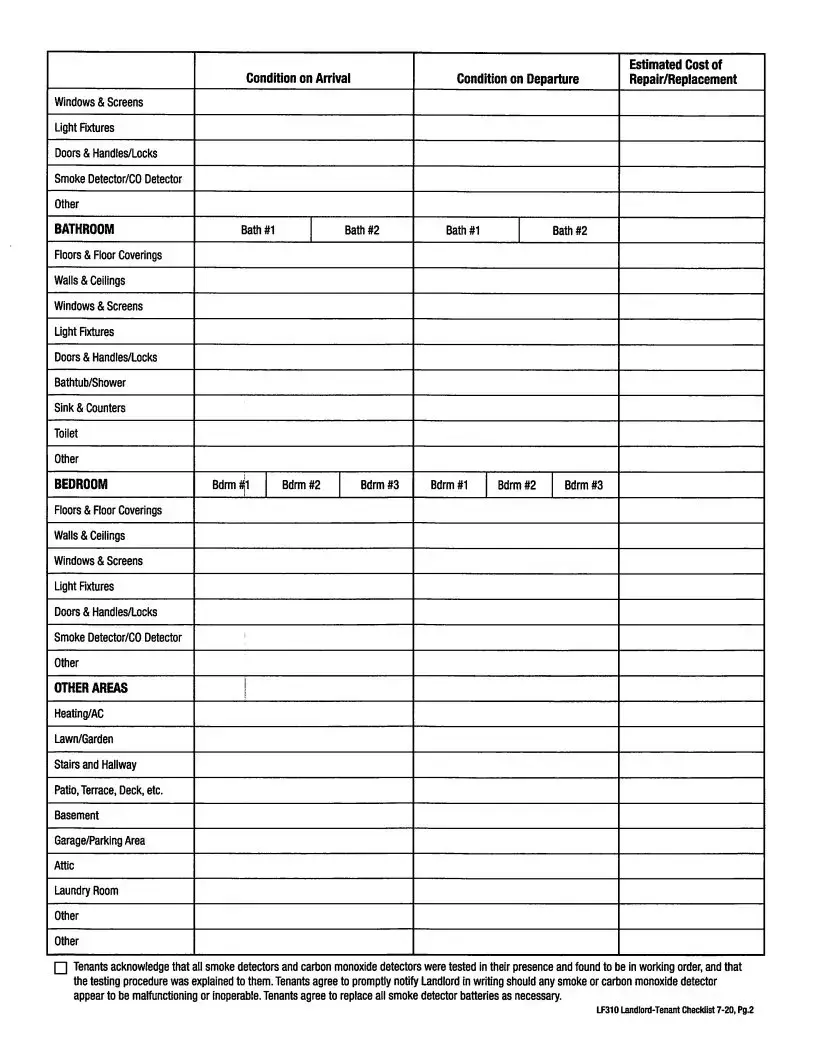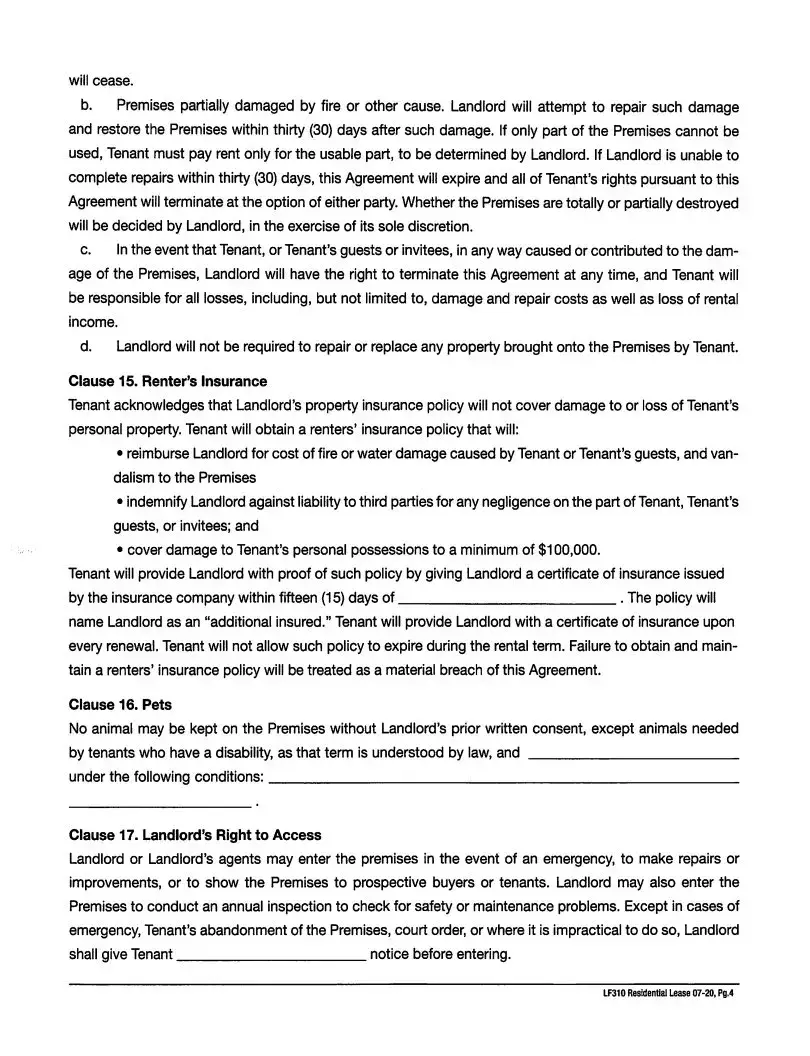The LF310 Residential Lease form serves as a crucial document in the landlord-tenant relationship, outlining the rights and responsibilities of both parties involved in a rental agreement. At its core, the form identifies the landlord and tenant, establishing who is responsible for fulfilling the terms of the lease. It specifies the premises being rented, ensuring that both parties understand the exact location and conditions of the rental. The form also includes important clauses regarding the limits on use and occupancy, emphasizing that the premises are intended solely for residential purposes and detailing the consequences of unauthorized guests. Additionally, it lays out the term of the tenancy, payment of rent, and the procedures for late charges and returned checks, providing clarity on financial obligations. Security deposits are addressed, highlighting the conditions under which they are held and returned. Utilities are also discussed, indicating which party is responsible for payment. Lastly, the LF310 form prohibits subletting without prior consent, protecting the landlord's interests. Each of these components is essential for a smooth rental experience, fostering clear communication and mutual understanding between landlords and tenants.
